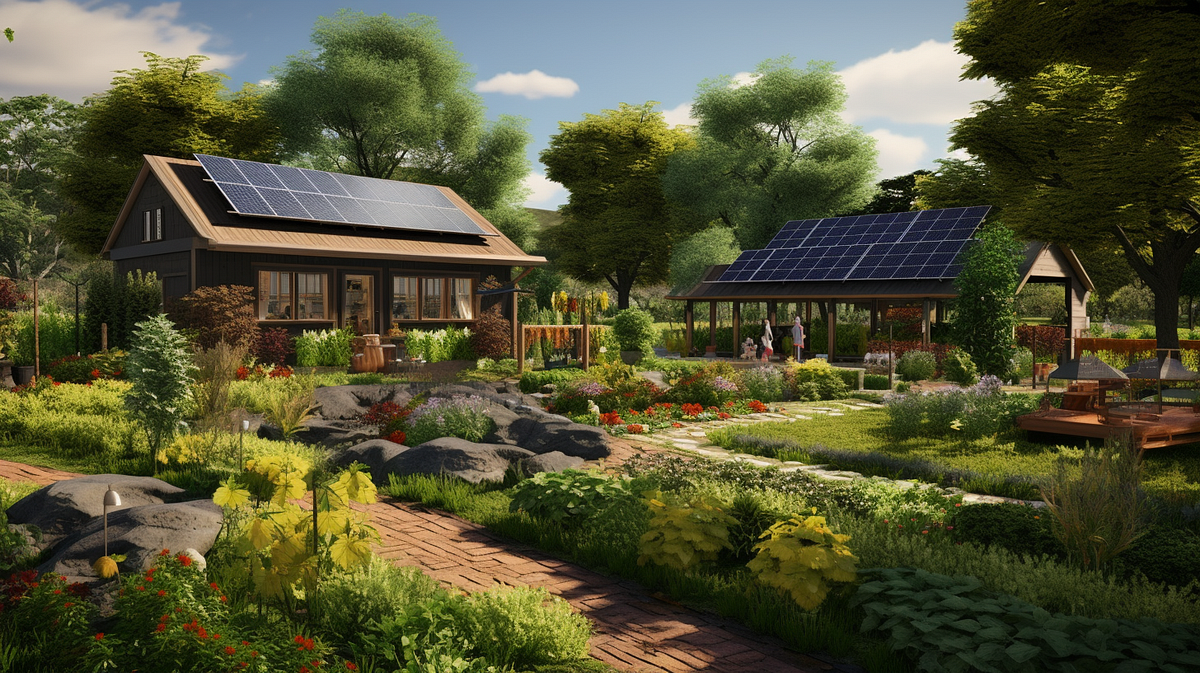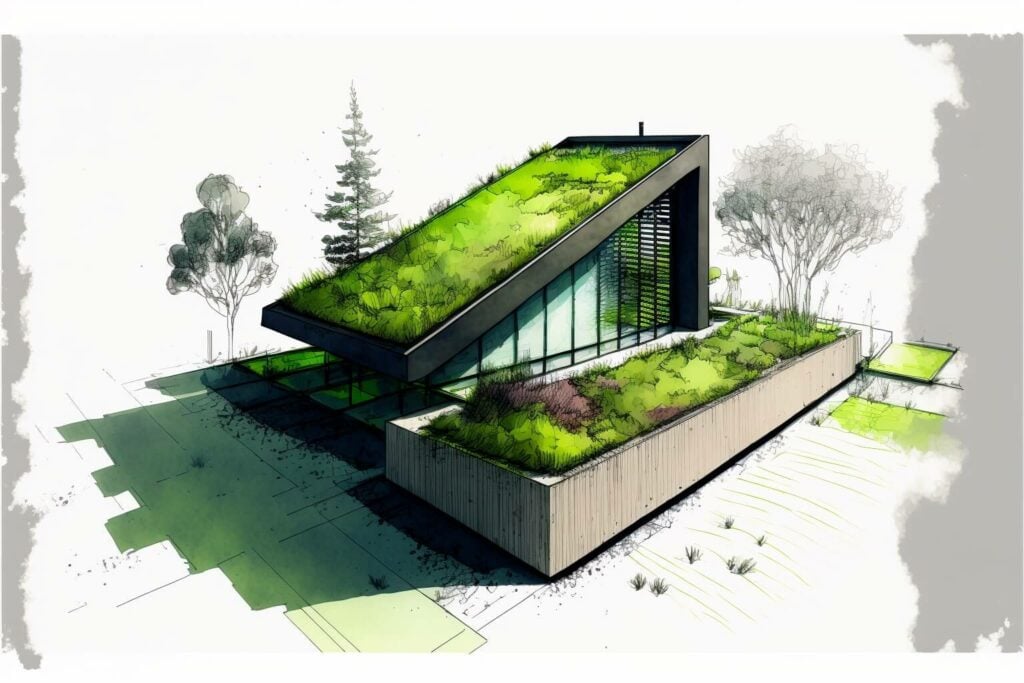In an era defined by climate change and environmental awareness, sustainable design has evolved from a niche interest into an absolute necessity. It’s no longer just about using recycled paper or adding a few plants; it’s a fundamental philosophy that rethinks how we create, from the buildings we inhabit to the products we use and the digital experiences we consume. For architects, product developers, graphic designers, and business leaders, implementing sustainable design is both a profound ethical responsibility and a powerful competitive advantage. This comprehensive guide delves deep into actionable strategies, moving beyond theory to provide a practical roadmap for integrating sustainability into the very core of your design process.
Understanding the Core Philosophy of Sustainable Design
Before diving into the “how,” it’s crucial to grasp the “why.” Sustainable design, often used interchangeably with eco-design or green design, is an approach that seeks to minimize the negative environmental impact of a product, service, or building by thoughtfully considering its entire lifecycle. The goal is to create solutions that are not only efficient and beautiful but also regenerative and restorative.
The classic framework for sustainable design is the Triple Bottom Line: People, Planet, and Profit. This means a truly sustainable design:
-
Planet: Protects and enhances the natural environment.
-
People: Is socially equitable and beneficial to the community.
-
Profit: Remains economically viable and creates long-term value.
Another critical concept is Life Cycle Assessment (LCA), a methodology for assessing environmental impacts associated with all stages of a product’s life, from raw material extraction through materials processing, manufacture, distribution, use, repair and maintenance, to disposal or recycling. Thinking in life cycles is the first step toward genuine sustainability.
A. Foundational Principles for Every Sustainable Design Project
Regardless of your discipline, these core principles should form the bedrock of your approach.
A. Prioritize Radical Resource Efficiency: The most sustainable material is the one you never use. This principle, often called “lightweighting” in product design, involves using the absolute minimum amount of material and energy required to achieve the desired function. In architecture, this means designing smaller, more efficient footprints. In digital design, it means optimizing code and images to reduce data transfer and energy consumption on user devices and servers.
B. Choose Circular Over Linear: Our traditional economy is linear: take, make, dispose. A circular economy, which sustainable design champions, aims to eliminate waste entirely. Designs should consider how every component can be reused, refurbished, remanufactured, or composted at the end of its life. This means designing for disassembly, using mono-materials instead of complex composites, and creating products-as-a-service rather than products-as-commodities.
C. Leverage Biophilic and Biomimetic Solutions: Biophilic design integrates natural elements, light, and patterns into our built environment to improve well-being and connection to nature. Biomimicry goes a step further, looking to nature’s 3.8 billion years of R&D for solutions to human problems. For example, designing a ventilation system based on termite mounds or creating self-cleaning surfaces inspired by lotus leaves.
D. Ensure Longevity and Timelessness: Combating the culture of disposability is a key tenet of sustainability. Design for durability, both physically and emotionally. Create timeless aesthetics that won’t look outdated in a few years, and ensure products are repairable. This opposes planned obsolescence and builds brand loyalty through quality and trust.
E. Advocate for Health and Wellbeing: Sustainable design must improve human health. This involves selecting non-toxic, low-emission materials that ensure good indoor air quality, incorporating access to natural light, and designing for acoustical comfort. A healthy environment boosts productivity, reduces stress, and is a fundamental human right.
B. Actionable Implementation Strategies Across Key Disciplines
Let’s translate these principles into actionable tips for specific design fields.
1. Sustainable Architecture and Interior Design
The built environment is a massive contributor to global energy use and carbon emissions. Implementation here has a monumental impact.
-
Passive Design First: Before installing high-tech solutions, optimize the building’s orientation, layout, massing, and fenestration to leverage natural heating, cooling, lighting, and ventilation. This drastically reduces the need for mechanical systems.
-
Conduct a Life Cycle Assessment (LCA): Use tools to evaluate the environmental impact of different building materials from cradle to grave. Don’t just choose a material because it’s “natural”; consider the energy used in its extraction, processing, and transportation.
-
Specify Low-Carbon and Regenerative Materials: Prioritize materials like sustainably harvested wood (FSC-certified), bamboo, cork, mycelium, and recycled steel/concrete. Source locally to slash transportation emissions. Explore innovative materials like hempcrete or carbon-sequestering products.
-
Design for Water Positivity: Implement rainwater harvesting systems, greywater recycling for toilet flushing and irrigation, and specify low-flow fixtures. Consider landscaping with native, drought-resistant plants (xeriscaping) to eliminate the need for irrigation.
-
Integrate Renewable Energy: Design the building to generate its own power through solar panels (often integrated into roofs or facades), wind turbines, or geothermal systems. Aim for net-zero energy or even net-positive energy status.
-
Create Adaptive and Flexible Spaces: Design interiors with movable walls and multi-functional spaces. This allows the building to adapt to changing needs over time without requiring demolition and reconstruction, extending its useful life for decades.
2. Sustainable Product and Industrial Design
This field deals with the physical objects we interact with daily, and its impact on waste streams is enormous.
-
Embrace the Minimalist Aesthetic: Reduce the product to its essential form and function. Every screw, every gram of plastic, and every milliliter of paint has an environmental cost. Strive for elegance in simplicity.
-
Design for Disassembly (DfD): This is critical for circularity. Use mechanical joints (screws, bolts, clips) instead of permanent adhesives or welds. Mark material types on components for easy sorting. Create products that a user can open, repair, and reassemble with basic tools.
-
Select Materials Intelligently: Choose recycled, upcycled, and bio-based materials. Avoid toxic finishes and dyes. Prefer mono-materials or easily separable material combinations to simplify recycling. Provide a material passport for the product.
-
Implement Cradle-to-Cradle Thinking: Don’t design for the landfill. Design for technical nutrients (materials that can be continuously recycled in industrial cycles) or biological nutrients (materials that can safely compost and return to the earth).
-
Develop Service-Based Models: Shift from selling products to selling the service they provide. For example, instead of selling a carpet, lease a “floor covering service” where the company maintains, repairs, and ultimately takes back the carpet to be recycled into a new one. This aligns business incentives with product longevity.
3. Sustainable Graphic and Digital Design
While often considered intangible, the digital world has a very real physical footprint through data centers, networks, and devices.
-
Optimize for Energy Efficiency: A lean website is a green website. Optimize images and videos (use modern formats like WebP/AVIF), minify CSS and JavaScript code, and streamline user journeys to reduce the number of pages a user needs to load. This decreases energy use and improves load times—a win for SEO and user experience.
-
Practice Sustainable Branding: For physical print materials, specify recycled, FSC-certified, or tree-free papers. Use soy or vegetable-based inks instead of petroleum-based alternatives. Advocate for smaller print runs and digital alternatives where appropriate. Design logos and assets that are timeless, not trendy.
-
Adopt Dark Mode UI: For digital interfaces, offering a dark mode option can significantly reduce energy consumption on devices with OLED or AMOLED screens. It also reduces eye strain for users.
-
Educate Through Design: Use your platform as a graphic designer to communicate sustainability messages, promote eco-conscious behaviors, and bring clarity to complex environmental issues through compelling infographics and data visualizations.
-
Choose Green Web Hosting: Host your websites and digital products with providers that power their data centers with renewable energy. This is a simple switch with a major impact on your digital carbon footprint.
C. Overcoming Common Challenges in Implementation
Adopting these strategies is not without its hurdles. Being prepared is half the battle.
-
Challenge: Perceived Higher Costs.
-
Solution: Reframe the conversation from initial cost to Total Cost of Ownership (TCO). Sustainable designs often have significantly lower operating costs (energy, water, waste disposal). Additionally, government incentives, tax breaks, and growing consumer demand for green products are improving the financial model.
-
-
Challenge: Lack of Information or Expertise.
-
Solution: Invest in training and leverage available resources. Tools like the Embodied Carbon in Construction Calculator (EC3) and databases for material health (like Declare labels) are becoming more accessible. Collaborate with sustainability consultants.
-
-
Challenge: Resistance to Change.
-
Solution: Lead with data and storytelling. Showcase compelling case studies of successful sustainable projects that achieved both environmental and financial success. Create small pilot projects to demonstrate value before scaling up.
-
-
Challenge: “Greenwashing” Accusations.
-
Solution: Be transparent and honest. Avoid vague claims like “eco-friendly.” Instead, use specific, verifiable data and seek third-party certifications (like LEED, B Corp, Energy Star, Cradle to Cradle Certified) to back up your claims.
-
The Future is Designed, Not Destined
Implementing sustainable design is not a single action but a continuous journey of learning, experimentation, and improvement. It requires a paradigm shift from viewing nature as a resource to be extracted to seeing it as a partner and mentor. By embedding the principles of efficiency, circularity, and humanity into every design decision, we stop being part of the problem and become the architects of the solution. The tools, materials, and knowledge are at our fingertips. The imperative now is to wield them with intention, creativity, and a unwavering commitment to building a world that is not just less bad, but truly regenerative and thriving for all.














